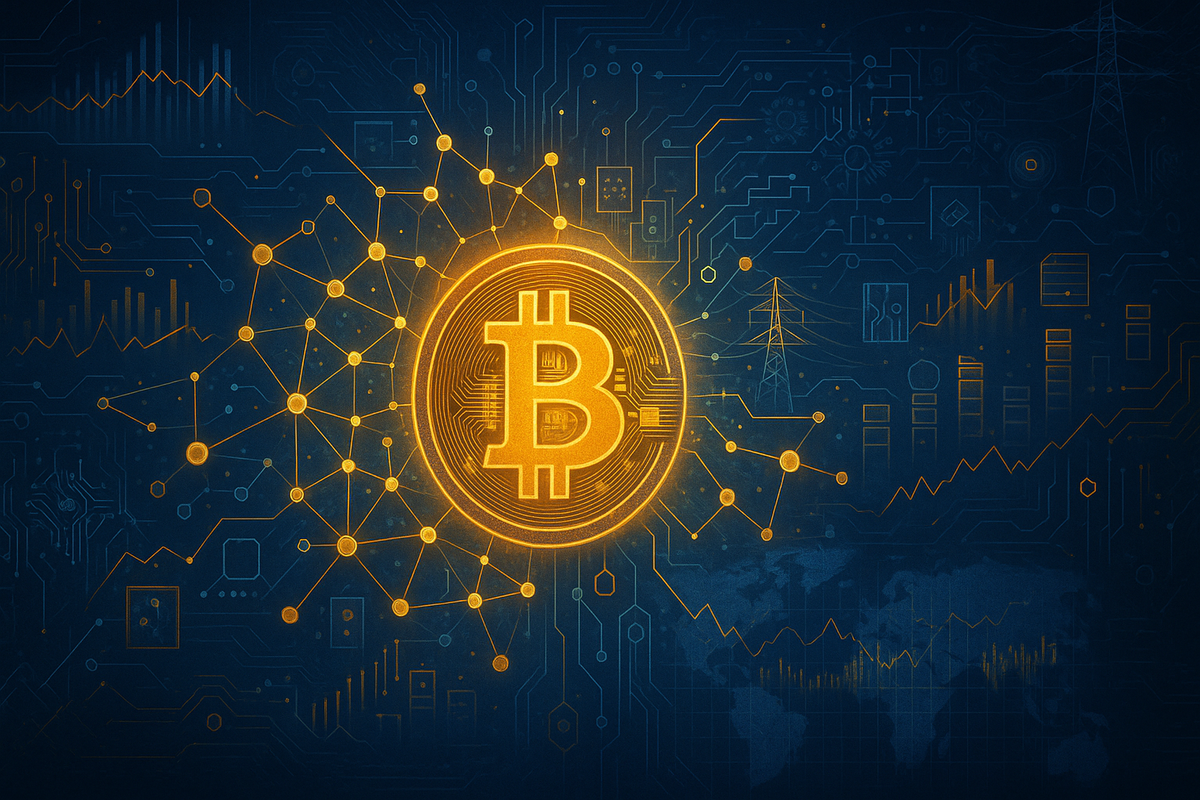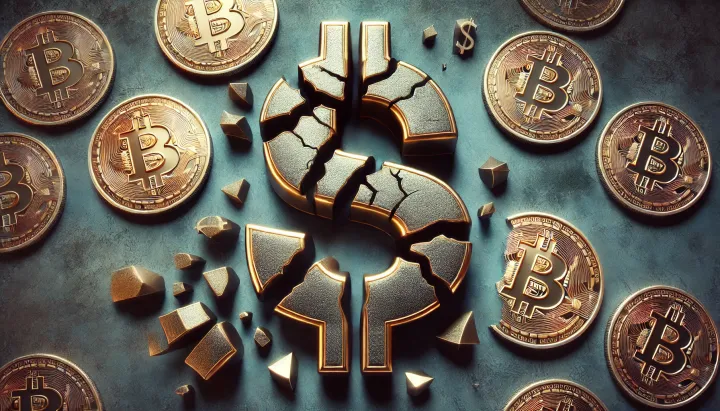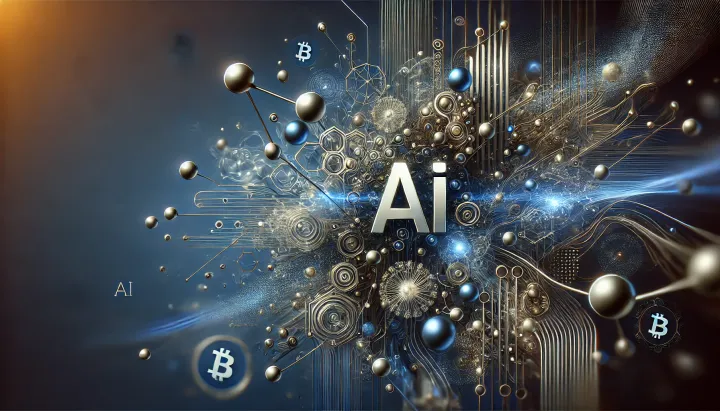Fiat Strain and the Digital Reserve Transition
The April 27, 2025 episode of the Jordi Visser Podcast has Visser arguing that the post-1971 fiat regime is losing global trust. He explains how stablecoins, Bitcoin, and tokenized assets are merging with legacy finance to build a new monetary stack while AI transforms real-economy dynamics.

- My 'briefing notes' summarize the content of podcast episodes; they do not reflect my own views.
- They contain (1) a summary of podcast content, (2) potential information gaps, and (3) some speculative views on wider Bitcoin implications.
- Pay attention to broadcast dates (I often summarize older episodes)
- Some episodes I summarize may be sponsored: don't trust, verify, if the information you are looking for is to be used for decision-making.
Summary
The April 27, 2025 episode of the Jordi Visser Podcast has Visser arguing that the post-1971 fiat regime is losing global trust. He explains how stablecoins, Bitcoin, and tokenized assets are merging with legacy finance to build a new monetary stack while AI transforms real-economy dynamics. Visser urges investors to “learn, unlearn, and relearn” to capitalize on power-infrastructure upgrades, digital money adoption, and blockchain-based capital markets.
Take-Home Messages
- Fiat Credibility Eroding: Ballooning debt and dollar weaponization push nations toward alternative reserves.
- Stablecoin Rails Advancing: Pending U.S. legislation signals official backing for dollar-linked digital payments.
- Bitcoin Reserve Thesis: Institutional flows and regulatory thaw elevate Bitcoin alongside gold for liquidity and yield.
- AI-Driven Power Crunch: Semiconductor shortages and grid strain create investment openings in energy and hardware.
- Tokenized Capital Markets: Blockchain funds democratize private-asset access, reshaping custody and compliance models.
Overview
Jordi Visser traces fiat fragility to the 1971 gold break, showing how crises from the Plaza Accord to 2008 bailouts inflated debt and eroded confidence. He argues that trust cannot be rebuilt with traditional tools because policymakers now weaponize the dollar. This structural breach primes investors to reassess reserve assets.
He contrasts gold nostalgia with evidence that stablecoins already circulate globally and that Congress is formalizing their status. Dollar-backed tokens, he contends, bridge legacy rails and emerging digital settlement layers. This hybrid approach undermines binary “gold-versus-crypto” narratives.
Bitcoin’s outperformance since his “Liberation Day” illustrates market recognition of a new store-of-value paradigm. Visser notes that pensions and endowments, squeezed by low bond yields, now examine Bitcoin for liquidity and return targets. Regulatory easing and corporate-treasury uptake reinforce the asset’s legitimacy.
AI-driven demand for compute and electricity forms the second pillar of his thesis. Semiconductor capacity and rare-earth supply represent bottlenecks that could redirect capital toward power infrastructure and embodied AI. Visser closes by urging investors to abandon rigid macro scripts and embrace a digital-economy feedback loop defined by adaptive learning.
Stakeholder Perspectives
- Central Banks – Diversify into Bitcoin and gold to hedge sanction risk while monitoring stablecoin settlements.
- Commercial Banks – Face deposit erosion from stablecoins yet gain custodial revenue in tokenized assets.
- Energy Utilities – Lobby for grid upgrades to meet AI-driven power demand and capture new tariffs.
- Healthcare Providers – Eye humanoid robots to ease labor shortages but need liability clarity.
- Institutional Investors – Rebalance toward liquid alternative reserves as bond-equity correlations falter.
- Regulators – Coordinate cross-border oversight of hybrid payment rails to preserve stability without stifling innovation.
Implications and Future Outlook
Fiat trust erosion will accelerate reserve diversification, positioning Bitcoin, gold, and dollar-linked stablecoins as core portfolio anchors. Central banks that hesitate risk liquidity shocks and diminished policy autonomy. Coordinated disclosure standards could smooth the transition and damp volatility.
AI’s appetite for compute and power will reshape capital expenditure, favoring regions that streamline permits, secure rare earths, and incentivize renewables. Utilities able to scale quickly may capture super-normal returns, while laggards face stranded-asset risk. Policymakers must balance grid resilience with decarbonization goals.
Tokenization and programmable payments will democratize private-market access, compress issuance costs, and blur lines between retail and institutional liquidity. Custody frameworks and smart-contract auditing become critical to investor protection. Jurisdictions that craft clear rules will attract capital and fintech innovation.
Some Key Information Gaps
- How will escalating U.S. debt and dollar weaponization alter global reserve-asset allocations? Understanding the pace and scale of shifts is vital for FX stability and coordinated policy responses.
- What design features should U.S. stablecoin statutes include to balance innovation with consumer protection? Clear, balanced rules could unlock trillions in digital-dollar circulation while safeguarding retail users.
- Which grid-expansion strategies best meet surging AI-related electricity demand cost-effectively? Identifying scalable models will determine whether AI productivity gains materialize or stall.
- What regulatory standards are needed to integrate humanoid robots safely into patient care? Standards will guide liability, ethics, and workforce planning as robotic adoption accelerates.
- What custody solutions ensure investor protection in tokenized private-market funds? Robust frameworks legitimize blockchain finance and prevent systemic risk from smart-contract failures.
Broader Implications for Bitcoin
Monetary Architecture Re-imagined
A hybrid stack of stablecoins, Bitcoin, and tokenized assets challenges post-Bretton Woods norms and dilutes single-currency hegemony. Over time, reserve diversification could foster multipolar liquidity hubs anchored by transparent digital ledgers. This shift pressures central banks to modernize settlement infrastructure and embrace interoperable standards.
Energy-Finance Convergence
AI-linked power demand binds monetary strategy to grid policy, making energy security a prerequisite for digital-economy competitiveness. Bitcoin mining’s location-agnostic nature may catalyze renewable build-outs in stranded-resource regions. Financial portfolios could increasingly price energy-production capacity alongside traditional assets.
Labor and Demographics Redefined
Humanoid robots paired with AI agents could counteract aging-population headwinds, reshaping productivity metrics and welfare models. As care delivery automates, Bitcoin-denominated micropayments may streamline cross-border labor markets. Policymakers will need novel taxation and retraining schemes to harness these gains.
Geopolitical Realignment
U.S.–China rivalry over payment standards and rare-earth supply chains may spawn competing digital-asset blocs. Nations aligning with open-source, dollar-linked stablecoin rails could gain access to deeper capital pools than those favoring closed e-CNY ecosystems. Bitcoin’s neutrality positions it as a strategic bridge asset amid fragmented geopolitics.



Comments ()